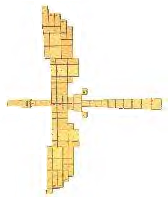Sand Bird
| It has been suggested that Sand Bird (Super Mario Galaxy 2) be merged with this page. (discuss) |
- This article is about the bird made of sand in Super Mario Sunshine. For the similar bird in Super Mario Galaxy 2, see Sand Bird (Super Mario Galaxy 2).
- “It... It... It hatched! The legendary Sand Bird is born! It broke the tower and flew away! That was unexpected...”
- —Pianta, Super Mario Sunshine
The Sand Bird is a bird creature that Mario encounters during Super Mario Sunshine. It originally appears as an egg, but ultimately hatches during the events of the game. When hatched, the Sand Bird resembles an entity composed of sand blocks, arranged in a shape reminiscent of an actual bird. Although the Sand Bird does not seem to possess any outstanding biological characteristics, it is a living creature[1] and capable of movement and producing screech noises.
Prior to hatching, the egg is kept inside a structure called the Shine Tower on Isle Delfino's Gelato Beach. Three large mirrors are situated around the building, reflecting sunlight into a device on the tower's top that keeps the Sand Bird egg warm and healthy.[2] This process has been going on for more than a century.[3] The Shine Tower and the Sand Bird egg are supervised by a Pianta professor,[4] who can be found near the structure most of the time.
The area where the Sand Bird flies near the large towers in the sky bears a resemblance to the Tower of the Wing Cap from Super Mario 64.
Appearance in Super Mario Sunshine
The Sand Bird plays an integral role during Episodes 2 and 4 (Mirror Madness! Tilt, Slam, Bam! and The Sand Bird is Born) of Gelato Beach. During Episode 2, the Sand Bird egg is disturbed by a giant Wiggler and creatures known as Plungelos. The Wiggler is occupying the device on top of the Shine Tower while the Plungelos are throwing the mirrors off balance, thereby depriving the egg of its warmth. Mario is tasked with restoring the original condition of the structure and getting rid of the intruders to ensure the egg's safety.
The Sand Bird then finally hatches in between Episodes 3 and 4, breaking out of the Shine Tower and flying away. During Episode 4, the newly hatched Sand Bird can be found soaring high above the ground, circling a tower. Mario accesses this place by leaping through the hole in the Shine Tower's roof and into the broken remains of the Sand Bird egg. By doing this, the player is presented with a Red Coin challenge: Mario needs to collect eight Red Coins while trying to not fall into the pit below him, and he can use the Sand Bird's flight path to access the harder-to-reach coins. When jumping, momentum does not factor in as usual, as the bird's constant flight means that Mario will have to move forward more while jumping to retain his position. Furthermore, at two points during the flight, the bird will tilt its body at a 90° angle, requiring Mario to adjust his footing accordingly. Seven of the Red Coins can be found on the bird's neck, wings, and tail. The eighth one is located on top of the large tower in the center of this area; once the Sand Bird reaches the end of its course near the top of this tower, it will dive and start from the beginning again.
Four of the thirty Blue Coins in Gelato Beach can be found only in Episode 4's secret area. As the Sand Bird flies toward the top of the tower, five clouds pass by. One of these clouds holds a 1-Up Mushroom, while the other four contain the Blue Coins.
The Sand Bird does not make another appearance after this. The remains of its egg can still be viewed inside the Shine Tower, but access to it has been blocked by a wooden grate.
Names in other languages
| Language | Name | Meaning |
|---|---|---|
| Japanese | おおすなどり Ōsunadori |
Great Sand Bird |
| German | Sandvogel |
Sand Bird |
| Italian | Uccello di Sabbia |
Sand Bird |
| Spanish (NOE) | Pájaro de Arena |
Sand Bird |

